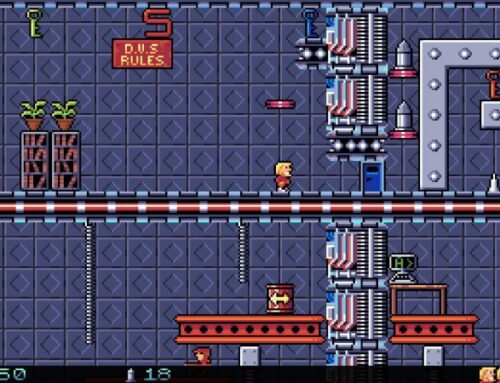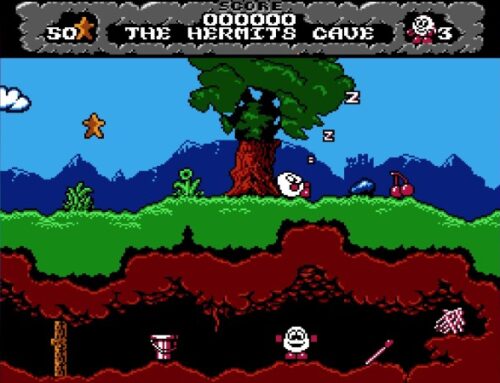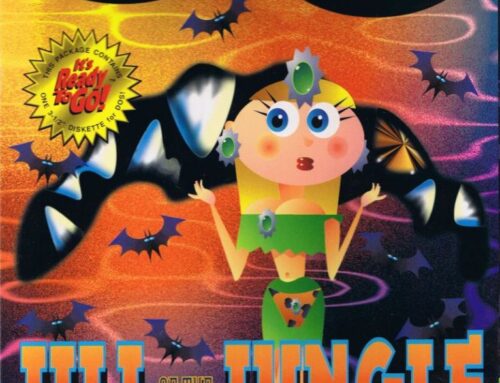
We’re not all grizzled retro gaming veterans — some of us are new to the hobby. So our Getting Into Retro Gaming guides are here to help you get up and running as soon as possible! If there’s any topic that you’d like to learn more about, be sure to let us know and we’ll cover it in a future column!
First released in 1979 and rather boldly promising “Intelligent Television”, Mattel’s Intellivision console is a contemporary of the classic Atari 2600 — and a very different beast from its main rival, right from the outset.
Offering superior visuals and sound to the Atari 2600 along with the potential for more complex games, the Intellivision was marketed as offering something of a more “grown-up” experience thanks to its deeper takes on sports games and bold experiments in strategy gaming. It still played host to plenty of arcade-style games, mind — some of which still hold up very well indeed today.
With an active homebrew and retro enthusiast community and a relatively small game library that makes amassing a complete collection a manageable dream, the Intellivision is one of the most interesting pieces of hardware from the early days of gaming to add to your collection.
The Intellivision system
There are two main models of the Intellivision “Master Component”, as the main console is called. They are available in both PAL and NTSC format, and most games will work on both as there is no regional encoding. There are a couple of exceptions due to the slight differences in the hardware and clock speed between the two formats, but for the most part an Intellivision game bought anywhere should work on both PAL and NTSC systems.
The original model has a distinctly 1970s beige, brown and woodgrain look to it. It features two built-in, permanently attached controllers that a lot of Intellivision enthusiasts prefer to those found on later revisions of the hardware — however, their permanently attached nature makes replacing them more troublesome.

The Intellivision II, meanwhile, was a later, cheaper, smaller redesign of the system that was released in 1983. Now appearing in white, black and red plastic, the system looked a lot “cheaper” but also takes up quite a bit less space and, notably, features detachable controllers. This means if one of your handsets fails, you can easily replace it — it’s even possible to use the controllers from the later Intellivision Flashback unit with an appropriate adapter.

Finally, the INTV System III (also known as the Intellivision Super Pro System) appeared in 1985 after Mattel sold off the Intellivision business. This used the original design of the Intellivision Master Component, but in black and silver.
A few things are worth bearing in mind when choosing which model of Intellivision to try and grab for yourself. Notably, the Intellivision II does not work with certain games, typically those released by Coleco — though if you have a modern flash cartridge, modern hackers have fixed the ROMs in question to make them playable on Intellivision II units.
The Intellivision II also featured a modification to the cartridge port that allowed it to work with an accessory called the “System Changer”, which allowed it to play Atari 2600 games. The original Intellivision can be modified to work with the System Changer, but does not work straight out of the box.
Finally, the Intellivision II has a slightly different sound chip to its predecessor, meaning there are a couple of minor sound glitches in some games, as well as a few visual hiccups in games including Shark! Shark! and Super Pro Football.
The INTV System III, meanwhile, is, to all intents and purposes, a repackaged original Intellivision, so it’s subject to the same considerations as above — it should work with most things, but will need modification to work with the System Changer.
Media and peripherals
Media is easy: Intellivision runs entirely on ROM cartridges, which have remained pretty reliable over the years, much like their Atari 2600 counterparts.
If you don’t want to go to the trouble of tracking down original cartridges but still want to play on original hardware, the ideal solution is some sort of flash cart that you can load Intellivision ROMs onto. The LTO Flash! appears to be the only real option in this regard, though at the time of writing it is out of stock. Developer Left Turn Only Productions seems to get new stock in every so often, though so check out the official website and express your interest if you want one.
Accessories for the Intellivision include the 1982 Intellivoice Voice Synthesis Module, which is a speech synthesiser that works with compatible games. Specifically, it works with Space Spartans, B-17 Bomber, Bomb Squad and Tron: Solar Sailer. The Intellivoice works with both the original Intellivision Master Component and the Intellivision II.

A somewhat rarer add-on for the Intellivision is the Entertainment Computer System or ECS, which was an attempt to convert the Intellivision from games console to full-on home computer. It came about primarily because Mattel had originally advertised a Keyboard Component for the Intellivision, but this had never come to market; this caused the Federal Trade Commission to start breathing down their necks, so the ECS was intended to placate them.
The ECS features a built-in BASIC programming language, an additional sound chip (allowing for more channels of sound and more connceted controllers), an audio tape recorder interface for saving data, an auxiliary jack for connecting to a printer, and two additional controller ports for connecting a keyboard, a music synthesiser keyboard or two more standard Intellivision controllers, allowing for four-player fun. Only six games specifically designed for the ECS made it to market, with several more completed but unreleased and others converted to work on a stock Intellivision.

And, of course, the aforementioned System Changer, also known as Expansion System A, plugs into the Intellivision cartridge port and allows it to play Atari 2600 games. The System Changer includes two Atari joystick ports and the switches required to set difficulty, select variations and reset Atari 2600 games. It’s a fun novelty, but you’re probably best off just getting an Atari 2600.

Software
Intellivision software can be picked up reasonably easily from eBay and other second-hand marketplaces. As previously noted, there is no difference between “PAL” and “NTSC” cartridges — though you may find some run slightly faster on PAL machines due to the hardware, voltage and refresh rate differences.
For those using a flash cart or emulator, there are several ROM archives available on the Internet Archive.
Alternatively, the Intellivision Lives! compilation for various platforms includes a selection of more than 60 games — including some previously unreleased prototypes and demos — that can easily be copied off the disc and used on a flash cart or emulator.
Killer apps

Demon Attack – one of the most fondly regarded games from Imagic, the Intellivision version of this classic arcade shoot ’em up knocks spots off the Atari 2600 version in terms of graphical fidelity. It even features an impressive rendition of the original arcade version’s boss ship, filling up a good half of the screen! Very impressive for the time.

Night Stalker – arguably the original “survival horror” game, Night Stalker is a deceptively simple game that is monstrously addictive thanks to its beautifully paced gameplay and tense atmosphere.

Astrosmash – One of the best fixed shooters on the platform, albeit a game that will happily keep you playing on a single “credit” for hours at a time due to its overly generous extra life feature.

Tower of Doom – An ambitious and mostly successful attempt to bring the role-playing game to home consoles, Tower of Doom is a complex but rewarding adventure with tons of variety and some surprisingly deep mechanics.

Utopia – One of the most challenging Intellivision games to get to grips with, Utopia is nonetheless worth a look as the game credited with inventing the construction and management sim genre a la Sim City. You can even enjoy it in two-player mode!
Intellivision emulation and modern options
If you can’t stretch to real hardware but want to enjoy the Intellivision experience for yourself, there are quite a few options today. Firstly, there’s the aforementioned Intellivision Lives! collection, which is available for Windows PC, Mac, PlayStation 2, Xbox, iPhone, iPad and Nintendo DS — though note as a 1998 release, the PC and Mac versions may not work on modern hardware.
One thing worth noting is that because the Intellivision had such unusual controllers — a 12-button keypad, a directional disc that could move in 16 directions and four action buttons — it’s quite tricky to emulate accurately using modern controllers, so you’ll likely have to make some compromises or get creative with button mapping.
Popular emulation front-end RetroArch features an Intellivision emulation core, though note you will need to track down and provide system ROM files in order to get this working. These are actually on the Intellivision Lives! disc, so if you can’t find them any other way, just pick up a cheap copy of that and grab the files off there, guilt-free.
There’s also an Intellivision Flashback game console that features 60 built-in games and authentic controllers, but these are hard to come by these days.
Finally, the Evercade retro gaming platform also has an Intellivision Collection 1 cartridge currently available (the “1” perhaps implying there is more to come?) that features 12 Intellivision classics.
Best of luck with your new retro gaming journey!




